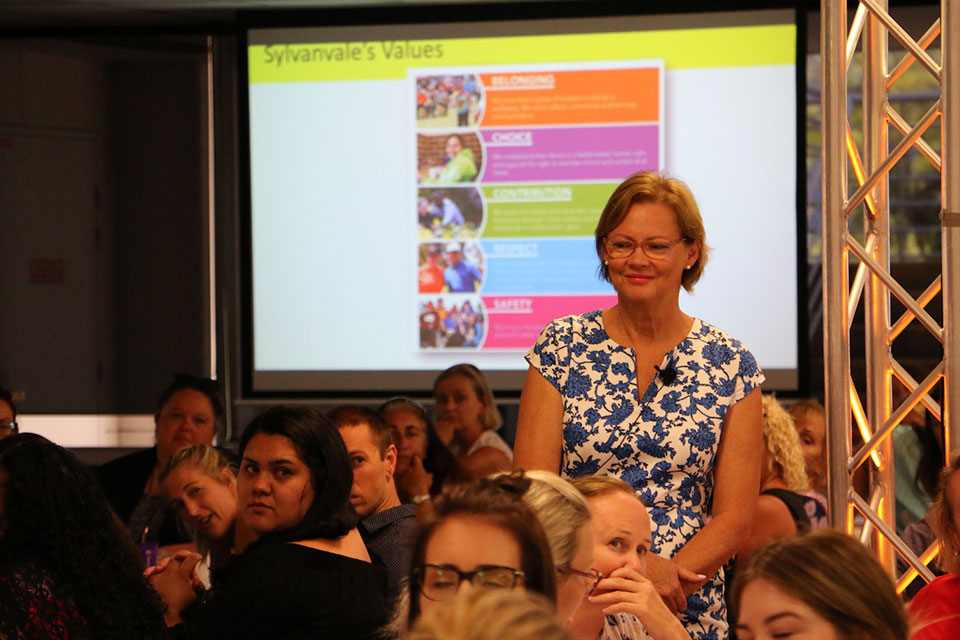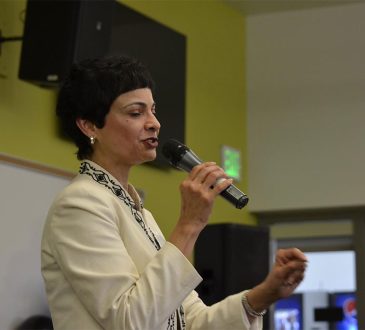Making culture practical. A new approach gets results for non-profits

The pandemic has led to a fundamental shift in the way employees view their relationship with work. This has impacted health, disability and community services more than any other sectors.
To say that it’s a seller’s market in the non-profit workforce is a gross understatement. This could be ‘the Great Resignation’ on steroids – and it’s only just begun.
After 18 months of ‘survival mode’ with unpredictable state ‘lockdowns’ and the delayed vaccine rollout, it’s hard to overlook the human cost of the ongoing, urgent and often unreasonable expectations on the heroes of this pandemic, our frontline care workers.
Employees at every layer of the community care sector, from frontline workers to senior leadership team members – are moving to those organisations offering more flexible work arrangements, career development, purpose and respect.
Retaining employees with talent and deep experience is now one of the greatest challenges this sector faces.
Corporate Culture Change Models don’t translate
Building a high trust culture is the only way leaders can navigate this shifting relationship. However, the problem with most culture change programs in this sector is that they tend to be adopted from the corporate sector. For years the Australian non-profit sector has looked to the corporate models for its systems, governance and practices, but very few corporate models translate easily into the non-profit environment.
Over the last 14 years working in this sector I’ve witnessed first-hand the damage that corporate language and change management processes can inflict on workplace culture: higher staff turnover, low trust and a pervasive sense of ‘mission drift’.
There is a significant human and financial cost when dedicated frontline support workers believe that management has lost touch with the mission. When good people lose heart, quality issues begin to proliferate and voluntary staff turnover rates accelerate.
The marketer’s approach to culture
For me, everyone falls into a ‘target market’. And every target market includes people with problems, personalities and unmet needs. In 2017, it occurred to me that the two key target markets which had the greatest impact on the culture and future sustainability of a non-profit organisation were the same two groups that were most often overlooked or ignored: existing employees and customers.
In the non-profit environment, if your employees feel heard, valued and supported – so will your customer. The frontline employee experience and the customer experience are two sides of the single most important relationship in the entire business. Every other layer of the organisations exists to support the quality and fit of that relationship.
Because demand for support services so outstrips the sector’s capacity to supply, the key business driver is the quality and capacity of the existing staff team. The strategic priority is then to understand and improve the actual employee experience.
As a marketer, I started thinking about how I could adapt simple marketing methodology to drive employee engagement and generate a culture of trust and empowerment. So I decided to shift my focus from the customer experience to the employee experience.
Learning from massive disruption
Over the few years, the Australian non-profit sector has experienced sweeping internal and external disruption as a result of massive legislative changes, significant workforce shortages and at least two Royal Commissions.
The lessons that I have learnt about workplace culture have been developed at the coalface of intense change and culture stress. It has relevance for every non-profit, but particularly those with frontline care workers such as nursing, aged care and disability.
Working closely with disability and aged care organisations, I spoke with hundreds of frontline workers and managers around Australia. The result of this collaboration is a new approach to grass roots culture change that begins with an honest look at the actual employee experience.
How it works
The approach is not just about engaging employees, the entire culture change model is re-designed through the lens of your frontline employees.
The process is practical, scalable and based on 7 principles:
-
- Your staff are your key target market. It is critical that you understand the current employee experience, their problems and unmet needs, and the thinking patterns influencing actual workplace behaviours.
- The CEO is the “Chief Culture Champion”. HR doesn’t ‘own’ the culture strategy – the CEO does. They must be highly visible, extremely human and be prepared to lead with transparency, gratitude and humility. They articulate the Vision, Purpose and Values at every opportunity. They know how to make it personal, by sharing what the mission means to them personally.
- Make it safe for people to speak up. Rich culture conversations can only happen in a ‘psychologically safe space’. This requires carefully considered facilitation at every step of the process, asking the right questions and then listening with an open mind and heart.
- The internal brand is the cultural compass. Great brands are only great when they are underpinned by values that are lived at every human touchpoint. In this way, the organisation’s values become the daily decision making criteria.
- Embed storytelling. Storytelling is the brand’s superpower. It drives engagement, builds empathy and transforms a random group of people into a team. Every meeting begins with someone sharing a story.
- Structure internal communications. Language and messaging must be clear and consistent. This requires a well-structured internal communications strategy with marketing and HR working as one team. Strong cultures have clear communication channels for sharing information and stories (Eg: weekly team updates, daily team stand ups etc.)
- Foster cross functional collaboration. An effective Culture Action Plan is one built in collaboration with your team. Every employee needs to feel that they had the opportunity to be heard and to share their vision of an ideal culture. Major projects are split across cross-functional working groups to build trust and teamwork.
We must do more than rebuild
The pandemic has offered us the opportunity not just to rebuild organisational cultures, but to build more resilient, emotionally intelligent, values driven workplaces.
Building a high trust culture begins with a better understanding of the actual employee experience and a daily commitment to improving that experience. A marketer’s approach offers a practical, ‘whole of organisation’ strategy for delivering on that commitment.
Written by Fran Connelley.
Add CEOWORLD magazine to your Google News feed.
Follow CEOWORLD magazine headlines on: Google News, LinkedIn, Twitter, and Facebook.
This report/news/ranking/statistics has been prepared only for general guidance on matters of interest and does not constitute professional advice. You should not act upon the information contained in this publication without obtaining specific professional advice. No representation or warranty (express or implied) is given as to the accuracy or completeness of the information contained in this publication, and, to the extent permitted by law, CEOWORLD magazine does not accept or assume any liability, responsibility or duty of care for any consequences of you or anyone else acting, or refraining to act, in reliance on the information contained in this publication or for any decision based on it.
Copyright 2024 The CEOWORLD magazine. All rights reserved. This material (and any extract from it) must not be copied, redistributed or placed on any website, without CEOWORLD magazine' prior written consent. For media queries, please contact: info@ceoworld.biz
SUBSCRIBE NEWSLETTER








